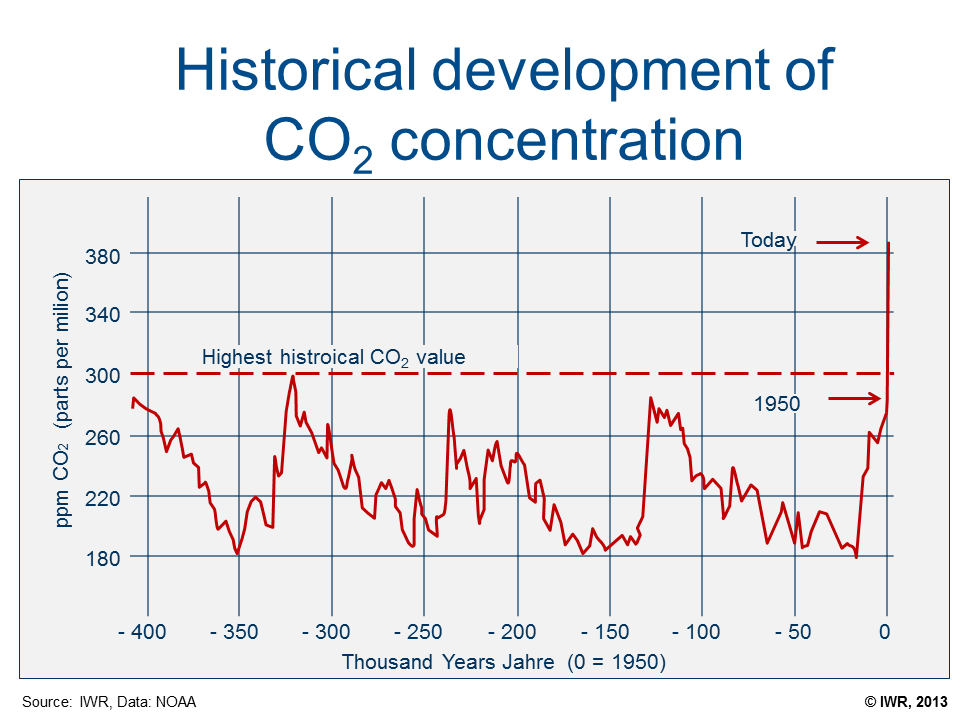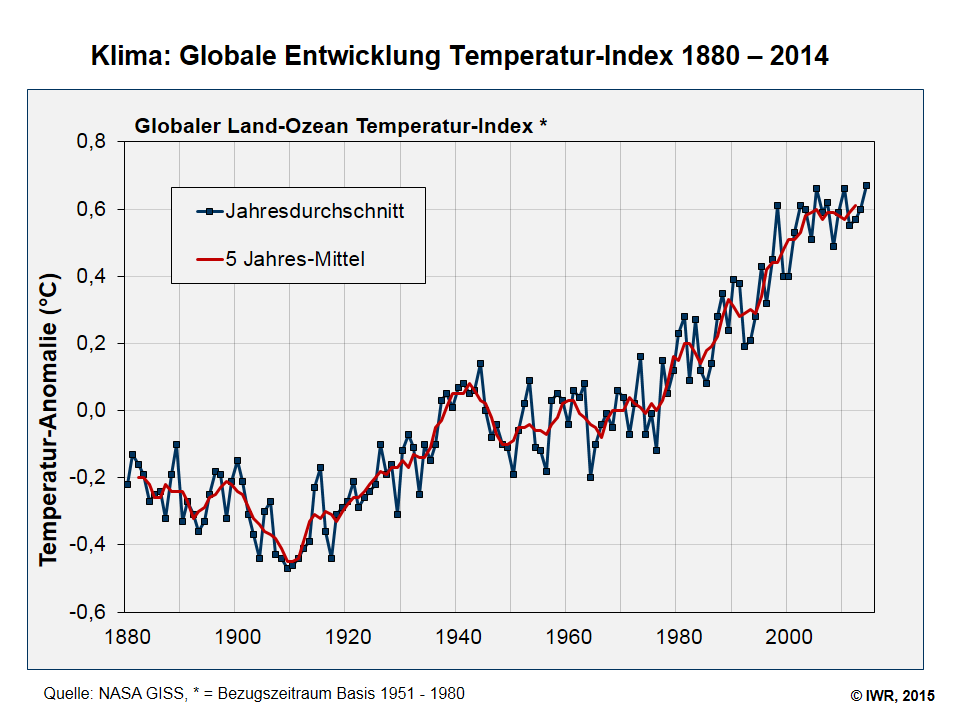Global warming is not a new phenomenon. It is a natural process. Moreover, in past epochs of the planet’s history it was already significantly warmer than it is today. Besides, climate change has been taking a break the last 15 years, meaning the forecasted rise in temperatures have no validity. The climate projections are all wrong. Therefore, there is no reason for worry.
Facts
The fact is: Throughout earth's history there were often epochs in which the concentration of CO2 and temperatures on the planet were significantly higher than they are today. There were also phases characterised by lower average temperatures. One thing distinguishes the current situation from earlier ones: There are 7 billion people on our planet, who want to be fed and who, in the places they have long lived, are threatened by rapid climate change.
1. Climate: The change from warm to cold periods
Generally in earth's history, ice ages, which are defined by a glaciation of the poles, alternate with normal phases in which the poles are not glaciated. In geological terms, with a glaciated Arctic and Antarctic, we are now in an ice age, known as the Cenozoic Ice Age. Cold and warm periods alternate during this ice age. The last cold period (colloquially referred to as the Ice Age) ended about 11,000 years ago. Since then, we have been in the so-called Holocene, a warm period with corresponding natural warming. Over the past 1,000 years average global temperatures have been relatively constant. It is only starting from the widespread onset of industrialisation, which marked out the mid/late 19th century that temperatures have been rising significantly faster. The CO2 concentration in the atmosphere has also been continuously on the rise since then, surpassing previous highs.

2. Discussions of climate change: Mankind or the sun
Discussions surrounding climate change focus on whether emissions of carbon dioxide and other greenhouse gases by man contribute to a significant change in the climate, or whether external influences (the sun, volcanoes, etc,) have a greater or a unique impact in their own right.
It is well-known that greenhouse gases (incl. methane and carbon dioxide) have an effect on the climate. The atmosphere consists of 78 percent nitrogen and 21 percent oxygen. These two components alone make up 99 percent of the atmosphere. The remaining components consist of trace gases, which either have originated as a result of radioactive decay (noble gases such as argon and neon) or belong to the atmospheric trace gases (carbon dioxide, methane, sulfur dioxide, ozone or water vapour). Although the concentration of the trace gases in the atmosphere is infinitesimally small, the climatological and the air chemical importance and in turn the effect on the climate is all the greater.
The natural greenhouse effect causes the earth to have an average temperature of + 15 ° C. Without the small concentration levels of trace elements the Earth´s temperature would be around -18° C. This clearly shows the considerable influence that the trace gases have on the temperature and the climate. The only point of contention is whether a temperature effect – and which effect – can be attributed to emissions of additional greenhouse gases caused by mankind. Worldwide, energy-related processes have emitted more than 1,000 billion tonnes of carbon dioxide into the atmosphere over approximately the last 60 years. Is the rapid rise in CO2 emissions too insignificant to affect the climate or is the climate system so slow to react that the impacts will first be felt after a time lag, in which case the impact could be irreversible.
Ultimately, there is no "trial run" on our planet, there's no second chance. Once set in motion, the process of climate change, along with all its consequences (nutritional problems, depopulation, etc.), can no longer be reversed. That is the climate risk. Climate skeptics often demand one-hundred percent proof for climate change and the adverse impacts projected. Would the same sceptics wager to set off in their vehicle, assuming there is a 10 percent chance the tyres´ lug nuts are loose?
3. Climate projections: Is climate change taking a break?
Drawing on the fact that global temperatures have remained relatively constant in the last 15 years, climate sceptics often like to make the argument that the climate projections are wrong and are convinced climate change is one big hoax. Is climate change really taking a hiatus? By means of the graph of worldwide temperature patterns from NASA, it is clear the global temperature values are moving within the trend-channel. Based on the overall development of global temperatures and continual rise of CO2 concentrations, it is quite puzzling how climate sceptics are able to come to the conclusion that climate change is not taking place and the projections of climate scientists are bogus.

4. Summary
When it comes to climate change, the key issue is whether mankind has an impact on the climate and the extent of that impact. Do we just have to accept climate change and adapt to it, or can mankind take active steps to deal with it? That is the fundamental question.
A key concern is the high speed with which the global warming we are now experiencing is progressing in geological terms. This distinguishes the current situation markedly from the preceding epochs with higher CO2 concentrations and average temperatures.
In past millions of years there were never so many people on earth as there are today. At present, about 7 billion people live on the planet and population growth continues apace. The effects of rapid global warming thus have far greater consequences for mankind. Above all, emerging market and developing countries with high populations are affected by the direct consequences of global warming, such as droughts or rising sea levels. That is the great climate risk the world faces. Relativising this by referring to earlier epochs with warm periods seems to be more than frivolous in light of these facts.
Links
1. Climate and Weather: Temperature on earth - the regions in which it is compared to the long-term average currently too hot and too cold
2. Climate data, Anomalies and specific weather situations on Earth: National Oceanic and Atmospheric Administration (NOAA)
3. CO2-emissions and renewable investments by countries 2012 - CERINA-Plan
© IWR 2026
All rights reserved
Reproduction only with permission of the IWR /IWR.de GmbH



